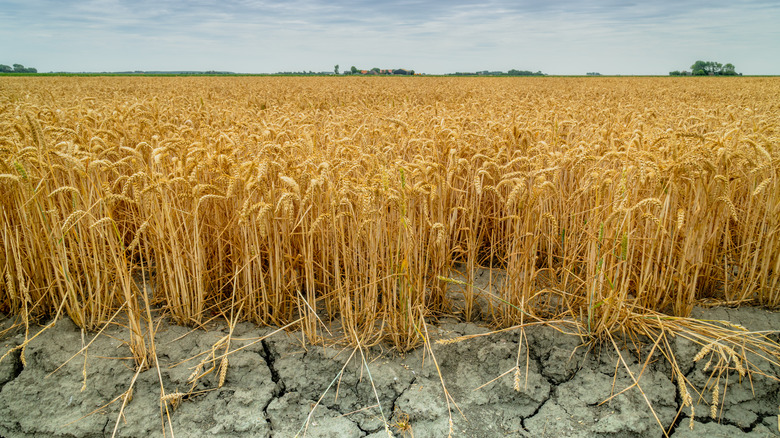Argentina's Drought Is So Bad Farmers Are Abandoning Land
Prior to Russia commencement of its military aggression in Ukraine in early 2022, over one-quarter of the world's wheat demand had been met by Ukraine (representing 10%) and Russia (representing 16%), according to the University of Illinois' Farmdoc Daily. Meanwhile, Argentina has also been a significant global wheat exporter, providing about 7%. The February 24 invasion of Ukraine by Russia presented an opportunity for Argentinian wheat farmers to move further into the market. In fact, by April, Argentina had already notably ramped up its wheat exports to African countries.
Unfortunately, however, before the current growing season could even get underway in May, drought conditions had some Argentinian wheat producers putting off sowing, per Buenos Aires Times. By mid-June, expectations for Argentina's wheat crops were already being significantly ratcheted downward – to 18 million tons of wheat — from 23 million tons in the prior year. By late-June, Argentina's two main grain exchanges, Buenos Aires and Rosario, were predicting that the number would continue to decrease along with continuing dry conditions (via Reuters).
It appears their prediction was reasonable. As World Grain reports, this year's exportable wheat yield estimate has now decreased to 13 million tons. The Buenos Aires grain exchange shared on September 15 that some Argentinian farmers have all but given up on their once fertile soil, with some having gone so far as to abandon their lots — or at least future plans to cultivate wheat on said lots pending better weather conditions (via Reuters)
Could drought-resistant wheat be the answer?
Drought conditions in Argentina are now the worst they have been in about 30 years, per Reuters, affecting more lots than ever in Argentina. (Note: Drought conditions are by no means exclusive to Argentina; In Africa, drought conditions continue to threaten food supply). As the Buenos Aires grain exchange reported in August, plantings in "regular-to-bad conditions" had risen from 18% to 34%. Now it appears that some Argentinian farmers are going so far as to flat-out abandon their otherwise harvestable lots, at least as far as wheat is concerned. And this could affect the availability of wheat, not to mention continue to drive its price upward, in future years (via Reuters).
Sadly, it seems the current circumstances were not only predictable but had, in fact, been predicted — not just by meteorologists, but also by scientists. Back in 2013, Scientific American published a report criticizing Argentina's agricultural practices, claiming that they stood to turn the nation's fertile soil to "sand." Fortunately, that hasn't happened yet, and new hope for wheat crops may come in the form of wheat that has been genetically modified to be drought-resistant (via World Grain). Although the U.S. government is still investigating whether to approve genetically modified wheat, World Grain confirmed it has been "commercially authorized for production and consumption in Argentina, where five varieties have been cleared for registration."
How those varieties did this season and their fitness for consumption remains to be seen. Stay tuned.

